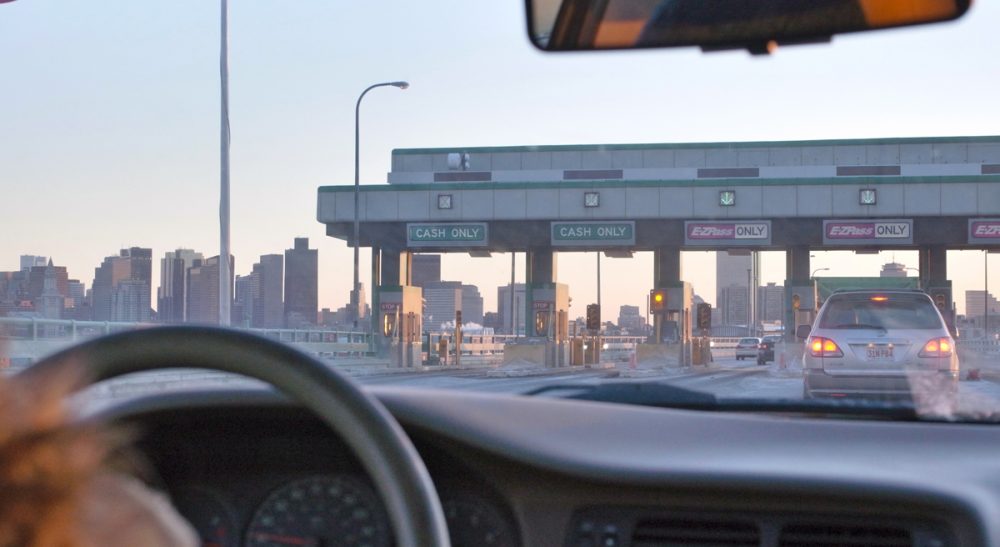Advertisement
Driving A Hard Bargain: Calculating The Toll Of Uber's Reduced Fares

A cab ride from my house in Cambridge, Mass., to Logan Airport, a distance of 10 miles, costs $60, including tip. It takes 20 minutes without traffic, 40 minutes during rush hour and up to an hour when there’s an accident or construction. For a mere $3.70, the bus and subway get me to the airport in the same time it takes a cab at rush hour. When I have an early morning departure or a late night return, however, the MBTA, which is closed at these times in provincial Boston, can’t get me there. That’s when I have no choice but to take a cab and open my wallet – 60-dollars-wide.
Now there’s Uber, the Internet ride service available 24 hours a day. Although it has a variable pricing scheme that relates price to demand, the times I need it for airport runs are among its least expensive periods. The first time I used Uber was for a 1:00 a.m. return trip. A friendly fellow in a clean car picked me up at Logan and deposited me home within half an hour for $28. Less than half the price of a cab seemed like a good deal.
[Fourteen dollars] seemed like a very good deal; so good that when I did the math, it seemed unsustainable, perhaps exploitative.
A few weeks later, my housemate was flying out early. Uber had been advertising price cuts, and he got a ride to Logan for $14. This seemed like a very good deal; so good that when I did the math, it seemed unsustainable, perhaps exploitative.
Take $14. Deduct the $1.25 Mass Pike toll and Uber’s $2.80 (20 percent) fee. The driver received $9.95 for his effort. A fair assumption might be that an Uber driver has a passenger 50 percent of the time. At 4:30 a.m., the trip takes only 20 minutes, so let’s assume this trip is equivalent to two-thirds of an hour’s effort. If so, the driver is making $14.93 an hour, just shy of the magic $15 minimum living wage many people clamor for these days.
But wait a minute: An Uber driver is not an employee. He is an independent contractor. He has to use and maintain his own car at an estimated rate of $5.60 in gas, maintenance and operating costs for a ten-mile trip. He also has to pay for all of his own benefits. On this early morning trip, the Uber driver is netting less than $10 per hour.
Every day, we encounter people who make this kind of paltry money — at fast food counters and big box stores, for example. We may wish these people made a living wage in a generalized way, but since our interactions with them are fleeting, we don’t feel individually responsible for their paltry earnings. Taking a private car to the airport before dawn is a personal experience. If the driver is not making a living wage, I feel a more direct responsibility.
Uber reports that drivers can make $60,000, even $90,000, a year, but that math is hard to balance. Uber advertises that tipping is not required for their standard cars. When I offered a tip to one Uber driver, he declined. I had no way to provide a hard currency ‘thank you’ to a particularly good driver.
Uber’s price cuts hurt drivers more than they hurt the company’s bottom line. When lower prices increase demand and market share, Uber’s 20 percent share of reduced fares is offset by the increased number of fares, while each individual driver can only make a finite number of trips per shift.
Uber’s low fares are yet another example of disruptive technology driving market efficiency. By creating direct connections between customers and providers, rideshare services threaten to make taxi companies, with their costly medallions and jurisdictional restrictions designed to protect turf more than provide value, as quaint as bookstores and travel agencies. That may not be good news for taxi drivers, but the concept seems fair.
I’ve had a great experience using Uber, and I want the service to succeed. But I also want people to earn a living wage.
Unfortunately, we remain a few steps away from a perfect marketplace. Uber is still the middleman, albeit one with speedy apps rather than a dispatch office. Uber tries to increase demand for rideshare services and swell its market share with the same fervor that old-fashioned cab companies protect their designated territory. Uber’s cost for incremental riders is negligible, so cutting fares to the bone to grow demand makes sense.
At some point, there will be a limit to fare cutting. Either Uber will not be able to attract drivers, or the drivers will not maintain their cars, or the service will deteriorate, as cut-rate services tend to do. But when equilibrium is achieved, will an Uber driver’s ability to make a decent living factor into the equation, or will we wind up with more people without traditional employment supports — social security contributions, health benefits, sick time, vacation time — who must rely on our shrinking social safety net to get by?
I’ve had a great experience using Uber, and I want the service to succeed. But I also want people to earn a living wage. I hope that Uber and its competitors structure fares to achieve that objective.
Related:
